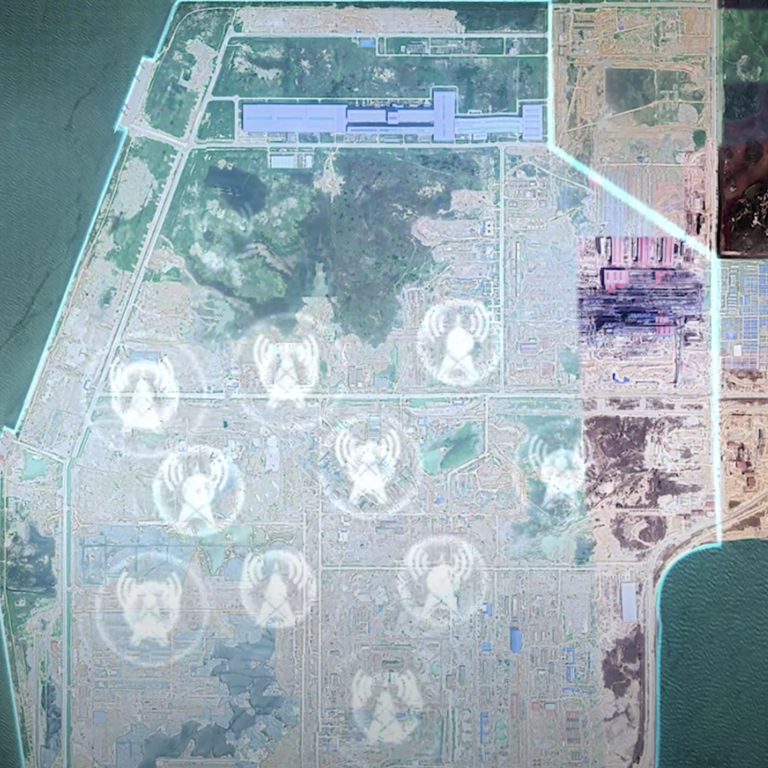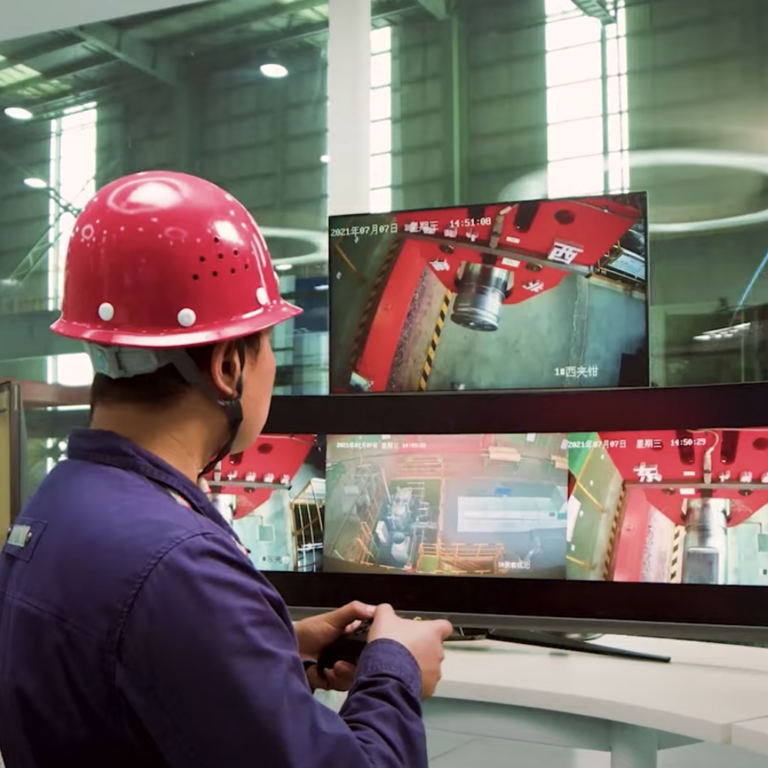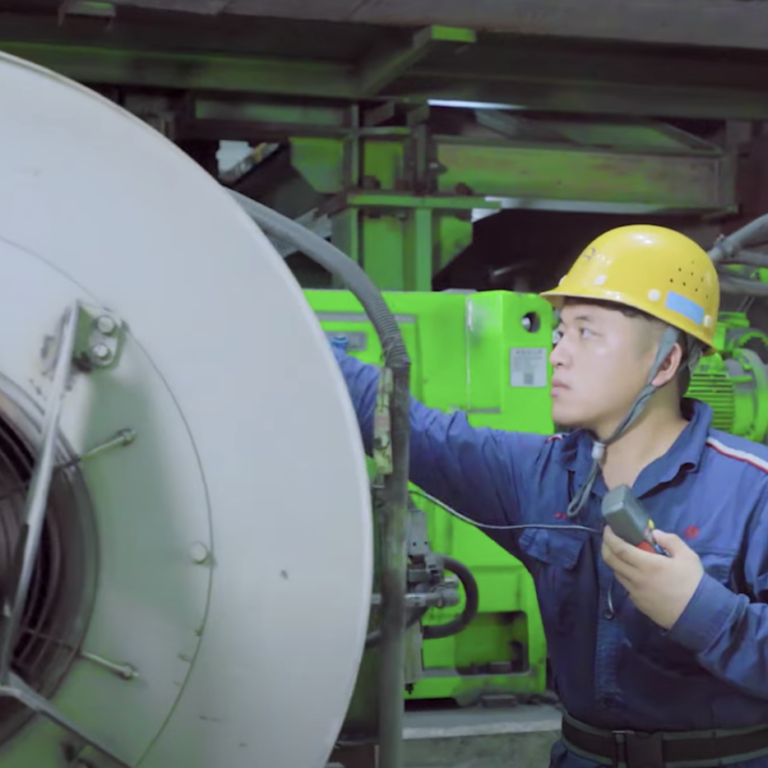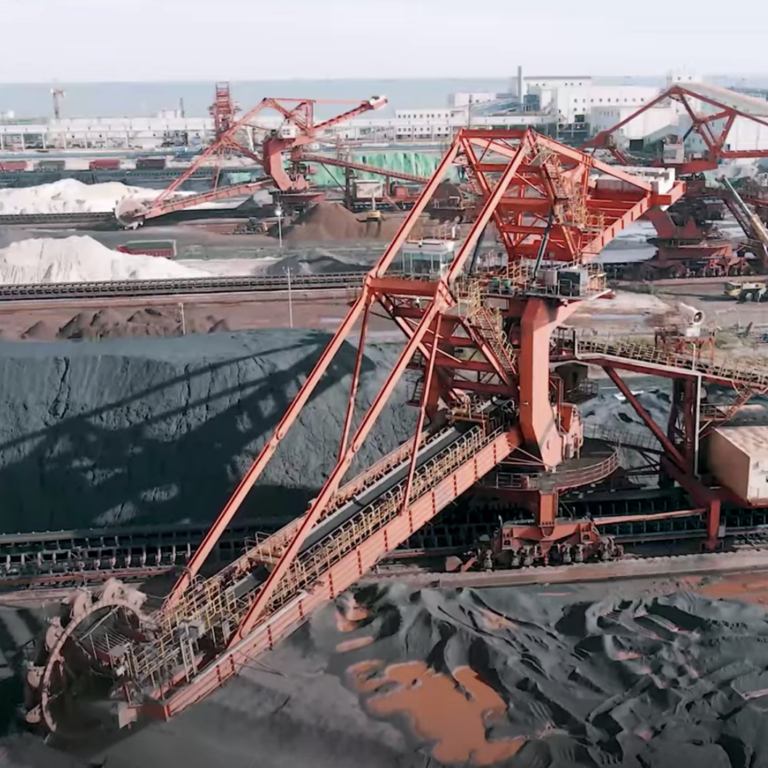5G Transformation Hub
5G smart iron and steel production at Liuzhou
How 5G connectivity helped Liuzhou achieve its goals
Liuzhou Steel Group is the largest iron and steel conglomerate in South China with more than CNY 100 billion in annual operating revenue and an annual comprehensive steel production capacity of 23 million tons. Liuzhou cooperated with China Mobile Group Guangxi Branch and Huawei on a 5G smart steel project by integrating 5G, cloud, and AI technologies into production processes.
Select a project
Contents
Challenge
Production processes in the iron and steel industry are sometimes referred to as a "black box", the data from which cannot be tracked or measured, creating significant barriers to operational efficiency – featuring as they do multiple coexistent sites with nonlinear characteristics, phases, and variables, requiring strong coupling yet with significant lagging. There are also persistent challenges caused by harsh working conditions due to high temperatures, as well as dusty and noisy environments, and the necessity for continuous operation of machinery in these settings can lead to human error, resulting in poor safety and production outcomes.
Solution
Eleven industrial IoT application scenarios based on 5G were deployed: the 5G Welder Cloud Eye for quality inspections, cloud identification of solid waste and steel coil IDs, smart cranes, remote control of assembly machines, remote control of stackers and reclaimers, labelling machines, predictive maintenance, AR remote collaboration, 5G manufacturing centres, and security drills via 5G cloud networks.
Impact & Statistics
The 5G digital transformation process undertaken has cut the costs of Liuzhou Steel Group by more than CNY 100 million due to immense efficiency savings. Cold-rolled cranes for instance are remotely controlled using 5G multi-view capabilities, reducing the human resource requirement by 60%, and the lifting interval from 20 minutes to five, boosting loading and unloading efficiency by 400%. The project is currently the 5G industrial project with the most scenarios in China.
Wider Implications
There are significant human as well as commercial elements to this story. In addition to the financial savings and boosted productivity measured, the enhancements enabled by 5G greatly improve the working environments, operational safety, and job satisfaction at the Lizhou site, due to steep reductions in harsh conditions.
Stakeholders
Liuzhou Steel Group, China Mobile, Huawei
02
5G smart iron and steel production at Liuzhou
How 5G connectivity helped Liuzhou achieve its goals
5G was the essential enabler due to wireless network signal coverage requirements, access concurrency and speed, data security, and future scalability. 5G can keep network latency within milliseconds, which supports precise control and improves production safety in industrial settings. The project for instance relies on the enhanced mobile broadband, low latency, and high reliability of 5G networks to enable the HD video system needed for remote monitoring and control of cranes from multiple perspectives – allowing lower use of human resource, and less exposure to noise, dust, corrosion, and electromagnetic interference.
By drawing on the low-latency data transmission of 5G networks, and the real-time big data analysis capabilities they enable, Liuzhou was able to employ a machine vision server and AI server in the cloud backend to replace inefficient and dangerous processes such as manual roller transfers. Operation and maintenance of the traditional equipment for this required three shifts per day to perform spot inspections, with workers manually recording operating states of thousands of pieces of equipment, relying heavily on the experience and sense of responsibility of point inspectors.
The use of 5G networks means this data can be collected within a single day by using equipment sensors to complete data deployment and release, while crucial devices such as rolling mills, fans, and winding engines can be monitored online 24 hours a day – increasing overall operation and maintenance efficiency by 30%, with AI diagnosis accuracy exceeding 85%. With production continuity ensured, unexpected shutdowns caused by equipment failures have been avoided to the maximum recorded extent.
To take another example, the cold-rolled steel plant has three welding lines, with welding operations conducted once every three to five minutes. Previously, defects in weld joints were observed visually, an approach prone to significant deviation, high work intensity, and high labour costs. It was also impossible to record and trace the quality of welding with images.
The 5G Welder Cloud Eye quality inspection system uses a 5G-powered video to collect images in real time and perform automatic detection online 24 hours per day using AI. This reduces manpower costs by 55% and increases recognition accuracy by 40%, with the welding quality recordable and traceable as well.

03
What other positive impacts resulted from these innovations?
5G’s role has made the working lives of workers at Liuzhou Steel Group both less arduous and less dangerous.
Stacker-reclaimers for instance are used to transfer coal ore and iron ore in the stockyard, and workers usually operate them outdoors in the open, exposing themselves to coal powder, ore dust and strong sunlight. This operating mode is inefficient, frustrating, and requires people to work in persistently harsh, dangerous environments with frequent risks to physical safety and liability to error.
By drawing on 5G’s stable uplink bandwidth of more than 200Mbps per cell, and industry-leading dual-transmit and selective-receive technology, Liuzhou can ensure stable PLC control latency of below 100ms, among many other technical advantages. Network coverage and transmission delay can therefore be achieved enabling remote control of stackers.
As cold-rolled products are one of the main products made by Liuzhou Steel Group, their manufacture involves large numbers of workers, but also traditionally exposes them to extreme heat. The grinding roller assembly workshop has a very high temperature, and three people are required for each roller lifting operation. Two people stay on the ground to tighten hoisting ropes, which is punishing work yet of low efficiency, and exposes workers to potentially serious accidents.
Operators now control the 5G-based intelligent loader to lift rollers using a gamepad, the first time in the industry such a user interface has been employed in this way. Technicians at Liuzhou Steel Group can now remotely manipulate loader operations as if playing a large-scale 3D game, rather than straining their limbs in great heat and risking injury.

04
Why should other businesses in the industry follow Lizhou’s example?
There is much to be studied and emulated in this project. As a result of the improvements set out above, the satisfaction of workers in positions known for harsh conditions has been greatly increased, the incidence of work-related safety production accidents has been reduced, and labour productivity has seen a drastic increase.
A single lifting operation that used to require three people for instance can now be easily completed by only one person via a computer, the working efficiency being doubled. Recruitment challenges have also been notably improved upon.
5G + AR cross-border remote collaboration also sees its industry-first application in the Liuzhou Steel Group project. In the past, vital equipment debugging and repair required external engineers to travel to the scene, which was time-consuming and costly, and reduced production efficiency. With the 5G + AR solution, these engineers can assess the situation from a first-person perspective, add real-time annotations, and make audio-video interactions and exchanges, with the front and rear teams connected seamlessly. The application of this 5G + AR solution also boosts positive reference significance, promotes efficient multi-base coordination, and strengthens the sharing of advantageous resources of Liuzhou Steel Group.

05
What next?
5G connectivity is the foundation, and cloud is the key carrier, for the steel and iron industry to transform from traditional manufacturing to intelligent manufacturing.
The 5G smart factory of Liuzhou Steel Group has seen investment of several hundred million CNY to enable improvements across steel surface quality inspection, remote control of cranes, intelligent predictive maintenance, and AR remote collaboration, among other new scenarios to help the company address challenges in product quality, production efficiency, and recruitment difficulty among others.
These are common challenges across the industry. To gain more insights into what these advances mean for industry trends, and be poised for even greater opportunities – to go from simply dividing the cake to baking a bigger cake – it is vital to understand deeply the pain points shared across the industry, build consensus within the ecosystem, and thus generate diverse capabilities to address shared problems. This should start from top-level designs, to pin down scenarios and analyse customers' business scenario demands, based on their strategic businesses – establishing from this the values to be pursued as we bring about the industry’s technological future, adhering wherever possible to the ‘5G-first’ principle.

06
About
About the GSMA
The GSMA is a global organisation unifying the mobile ecosystem to discover, develop and deliver innovation foundational to positive business environments and societal change. Our vision is to unlock the full power of connectivity so that people,
industry, and society thrive. Representing mobile operators and organisations across the mobile ecosystem and adjacent industries, the GSMA delivers for its members across three broad pillars: Connectivity for Good, Industry Services and Solutions, and Outreach. This activity includes advancing policy, tackling today’s biggest societal challenges, underpinning the technology and interoperability that make mobile work, and providing the world’s largest platform to convene the mobile ecosystem at the MWC and M360 series of events.
For more information, please visit the GSMA corporate website at www.gsma.com.
Follow the GSMA on Twitter: @GSMA.
GSMA 5G Transformation Hub
The GSMA 5G Transformation Hub is a source of information on some of the most innovative 5G solutions in the world. This portal contains case studies detailing design, benefits, key players, measured value and the future impact of scaling up these 5G solutions worldwide. The 5G Era is now firmly established and this family of standardised GSM technologies, including mmWave, are being rolled out successfully across the globe. The GSMA 5G Transformation Hub, launched at MWC Barcelona in 2022, provides details of how 5G is best placed to deliver real value for a range of key sectors including manufacturing, energy, transportation, media and live entertainment, smart cities and construction.. Many more case studies will be added, in the coming months, covering even more industries and the GSMA is asking Members to nominate innovative 5G case studies to add to this global digital showcase. The 5G Transformation Hub and this particular Case Study are both sponsored by Qualcomm.
About this case study
This case study is for information only and is provided as is. The GSM Association makes no representations and gives no warranties or undertakings (express or implied) with respect to the study and does not accept any responsibility for , and hereby disclaims any liability for the accuracy or completeness or timeliness of the information contained in this document. Any use of the study is at the users own risk and the user assumes liability for any third party claims associated with such use.